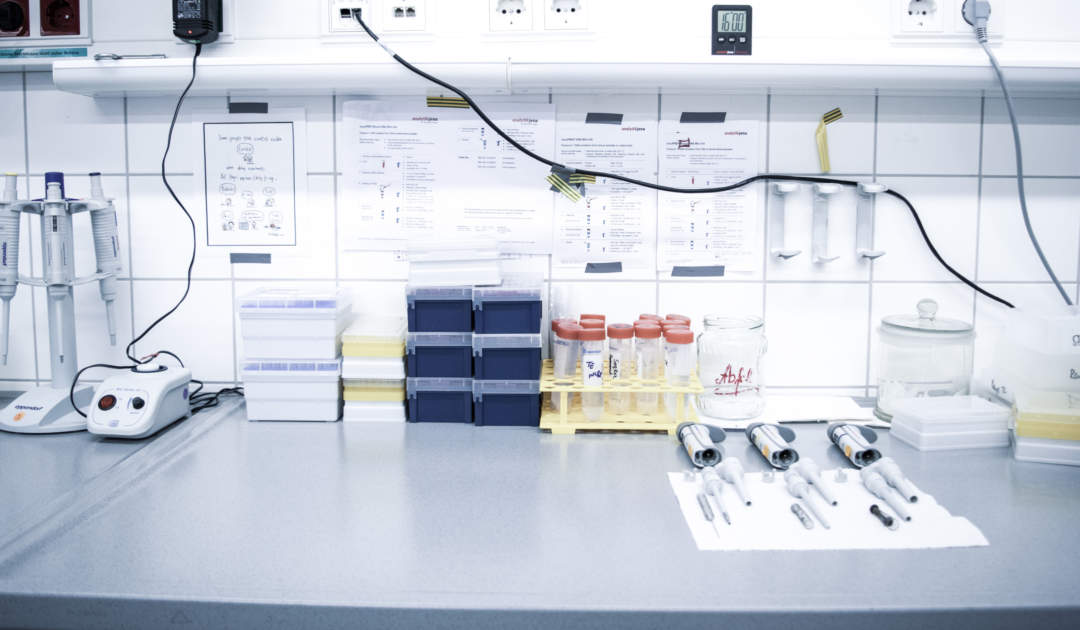Museum of Zoology
Molecular Laboratory
Research in the area of expertise of the Molecular Laboratory elucidates questions in the research field of Biodiversity and Systematics.

Research in the area of expertise of the Molecular Laboratory elucidates questions in the research field of Biodiversity and Systematics.
The use of molecular biological methods in state of the art evolutionary research has two major advantages: the methodology can be implemented universally in all organisms and enables insight along a long time interval of many million years. The molecular approach enables survey of the genetic diversity that underlies the biodiversity of species. Furthermore, the results can enlighten phylogenetic relationships and mechanisms that could have led to these.
If species differentiate from an ancestor, they accumulate mutations regularly, thereby increasing the genetic distance between them. As mutations accumulate regularly in certain parts of the genome, the pace of morphological change is extremely variable. Implementing this molecular clock enables genetic data to provide insight into historical zoogeography and phylogeography of species and populations: the biogeographical background of distributions patterns can be uncovered, speciation events can be traced back, for an example they can be tracked down to separation of the original populations by geographic barriers.
Due to increasingly complex regulations such as the Nagoya Protocol, it is becoming more and more difficult to study fresh material. The analysis of historic DNA from museum exemplars thus progressively gains in importance. The molecular laboratory at the Zoological Museum in Dresden meets this challenge and is specialized on the analysis of aDNA (ancient DNA).
The molecular laboratory of the Museum of Zoology comprises a main lab area, as well as a separate laboratory facility for work on samples (tissue, feathers, hairs and bones) from organisms from museum collections using aDNA methodology. To minimize contaminations, the most susceptible steps (DNA isolation, PCR- and DNA-library preparation) are performed in a clean room in another building.
The genetic material is analyzed with several PCR machines including the “fast” mode, a sequencer from Applied Biosystems (ABI 3730 Genetic Analyzer, 48 capillaries) and a MiSeq sequencer from Illumina.
The facilities* are on a par with those at corresponding university research institutes in the field of systematics. Apart from the work with aDNA or historic DNA from museum exemplars, the laboratory is very effectively implemented in basic research in the areas of phylogenetic relationships and population genetics. Sequences can be analyzed and edited promptly after isolation and amplification of the genetic material from the samples; fragment analyses can be specifically optimized.
* The equipment of the laboratory includes:
• 7 PCR-machines (Eppendorf, ABI, BIOER)
• qPCR-machine
• Covaris
• TapeStation
• Qubit
• Nanodrop One
• ABI sanger sequencer
• MiSeq
The focus in the molecular laboratory is genetic research to enlighten systematic-taxonomic, phylogenetic and population genetic questions. Well equipped with its aDNA facility and expertise, the laboratory is open to Senckenberg scientists from all institutes. The topics of the head of the laboratory, Dr. Anna K. Hundsdörfer, are introduced on these pages.